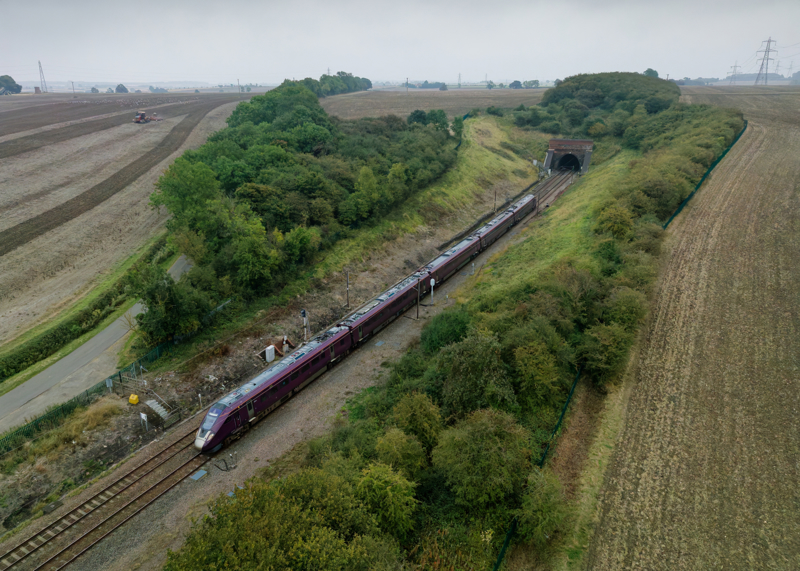
Assembly of the 33 five-car bi-mode units for East Midlands Railways continues, with units up to 810025 already in the workshops at Hitachi’s Newton Aycliffe site.

Assembly of the 33 five-car bi-mode units for East Midlands Railways continues, with units up to 810025 already in the workshops at Hitachi’s Newton Aycliffe site.
Currently, bodyshells for units 810024/025 are on the weld line. This facility, established with support from Hitachi Italy, is crucial for ensuring the structural integrity.
In the paint shop are bodyshells for 810022/023, which are undergoing a meticulous process to ensure a high-quality finish.
The steps include cleaning via shot blasting, primer application, putty application, additional primer, top coat, and finally the finish and polish procedure.
Once painted, the units move to the Assembly Hall.
Here, cars enter the pre-line and progress through various assembly stations where insulation, flooring, doors, toilets, and catering facilities are installed.
The mega rack, which includes wiring and pneumatic pipework, is attached to each vehicle’s underframe at the end of the pre-line.
The cars then enter the main lines for further assembly - including the installation of internal electrical harnesses, underfloor equipment, internal panelling, roof equipment, carpets, seats, and tables.
Finally, the bogies are fitted, and the car is inspected and handed over to the testing phase.
Currently, units 810015-021 are in assembly, while units 810006/ 008/014 are in the testing phase.
Units 810006/008-013 are undergoing routine tests, which includes single-car and unit testing.
The type testing phase is critical for ensuring the new fleet meets all regulatory standards.
Presently 810001/003-005/007 are being used for type testing, with vehicles from 810002/027 also involved in climate chamber and strain gauge testing.
The type approval process is divided into five-car and ten-car authorisation. Testing began at RIDC Melton in July 2023 and has been conducted on both the East Coast and Midland Main Lines. The five-car authorisation testing is expected to complete in December 2024, with reports being compiled and submitted to AtkinsRéalis.
The ten-car authorisation testing is under way and should be completed by March 2025. Following this, technical specification (contractual compliance) testing will take place, including operational route-specific performance and infotainment tests.
GB Railfreight won the contact to take on the role of test operator, collaborating closely with Hitachi. EMR’s driver training programme will commence once the units are accepted.
The acceptance of units is scheduled between spring 2025 and summer 2026, with the first passenger services anticipated around autumn 2025.
This timeline allows for the replacement of a Class 222 diagram with a Class 810.
The EMR inter-city timetable has been adjusted to be ‘810-ready,’ ensuring a smooth transition.
After the initial replacement of four simple diagrams, the rollout will become more complex, involving splitting and joining of units, and will be done in batches. EMR aims to have a full Class 810 service operational by late 2026.
The Class 222 fleet will be returned to Eversholt on a rolling basis as each Class 810 diagram is successfully integrated into service.
Construction of the Class 810s will bring the number of Hitachi AT300 vehicles delivered or on order to 1,707, comprising 267 units of five-, seven-, and nine-car formations.
Login to continue reading
Or register with RAIL to keep up-to-date with the latest news, insight and opinion.

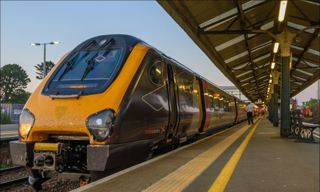
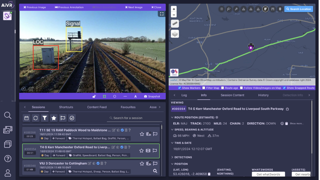
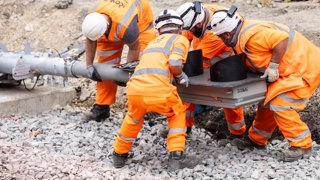
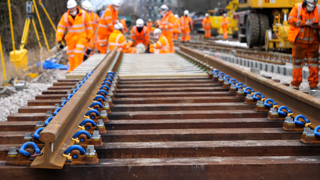










Matoc010 - 30/12/2024 18:15
If Cross Country could obtain the 222 units to increase capacity between Plymouth and Birmingham, that would be greatly appreciated!